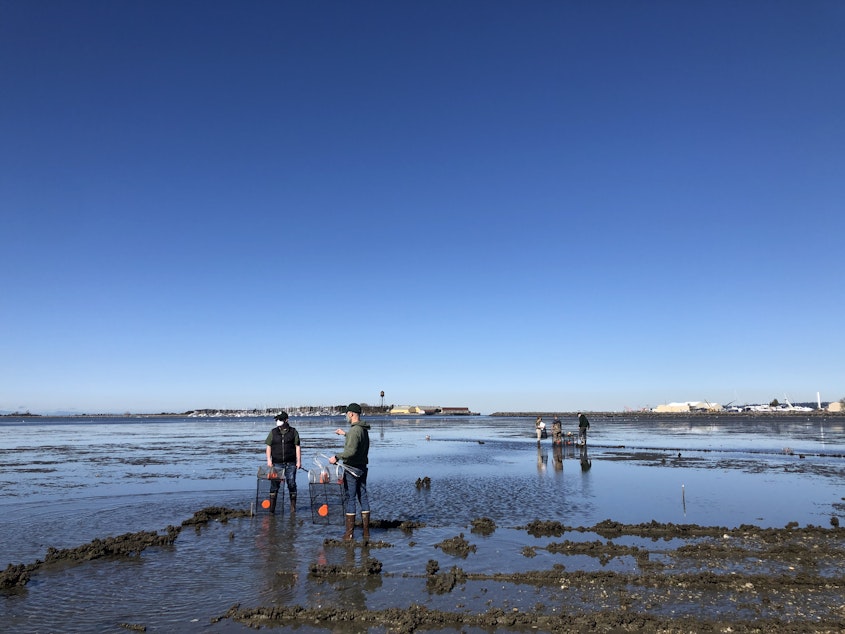Lummi Nation combats massive outbreak of invasive European crabs
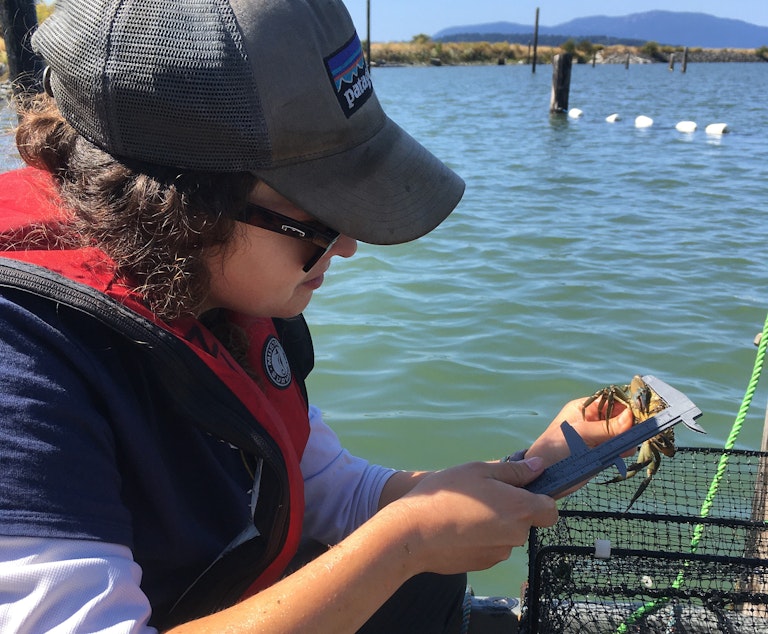
Lummi Nation biologists were alarmed to find 2,600 European green crabs invading the shores of the Lummi Reservation near Bellingham last year, more than had ever been seen in Puget Sound.
This year, they found 30 times that number.
“When something like this happens, and it has an effect on our system like this, we look at it as an emergency to address the problem, and before it becomes devastating,” Lummi Nation chairman William Jones Jr. said.
In November, the Lummi tribal council declared the crab infestation a disaster and formed a task force to combat the exploding population of what is considered one of the world’s most destructive invasive species.
Lummi officials are calling on Washington Gov. Jay Inslee to declare an emergency and make funding available to fight the unwanted invertebrates before they take a heavy toll on the salmon and native Dungeness crabs that the tribe relies on.
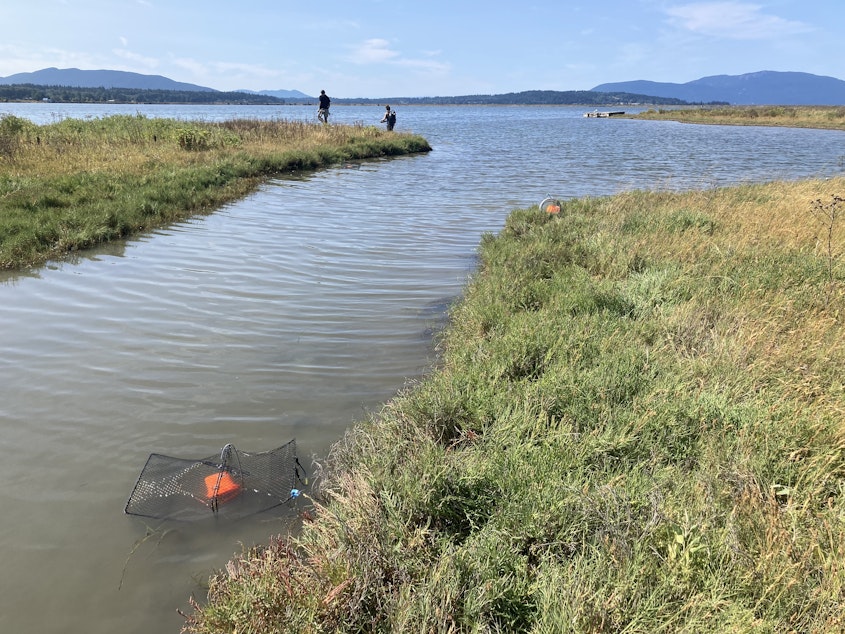
The green crabs showed up on Washington’s outer coast around 1998. Lummi Nation officials have been trying to fend them off ever since several dozen were found in a saltwater pond on Lummi Bay in 2019.
Sponsored
Despite efforts to trap them, their numbers skyrocketed this year in the 750-acre aquaculture pond.
The warm, shallow, sheltered lagoon has turned out to be a perfect incubator for the voracious crabs.
The Lummi sea pond, visible in satellite imagery as a darker oval inside a curving, 3-mile-long sea wall on Lummi Bay.
“They'll eat everything and anything, and they don't have any predators in the pond,” Lummi biologist Bobbie Buzzell said.
Sponsored
The European crustacean is known for damaging all sorts of other species.
“The clams, the oysters, the salmon, the eelgrass, the different things that we've been protecting for thousands of years,” Jones said.
While the European crabs are smaller (and thus less desirable as seafood) than adult Dungeness crabs, the invaders prey on the juvenile native crabs.
Lummi Councilmember Lisa Wilson says, with dwindling salmon populations, Dungeness crabs have become the tribe’s most important fishery in recent decades.
“This is kind of the last thing that we've been able to have some kind of stability,” Wilson said. “Almost our last lifeline for our fishermen to be able to survive.”
Sponsored
“We're a fishing nation,” Jones said. “The families survive off the sea.”
“We need to protect that,” he said.
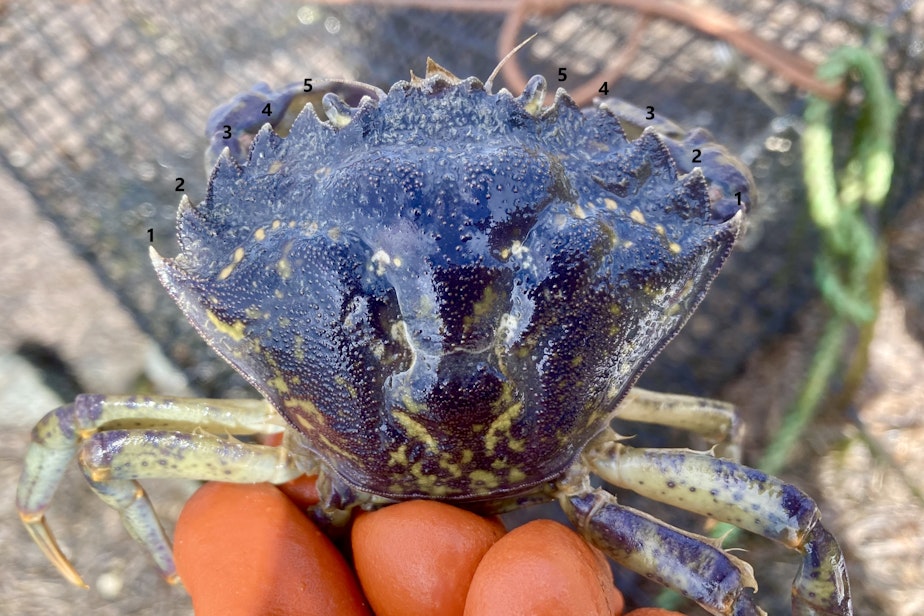
The Lummi task force aims to come up with ways to make the sea pond less hospitable to the invaders before their population explosion spreads to other parts of Puget Sound.
“Trapping is definitely a short-term solution for the sea pond,” Buzzell said.
Sponsored
The green crabs have never been observed in Puget Sound south of Whidbey Island, according to marine ecologist Emily Grason with Washington Sea Grant. Just two were captured in the Port Townsend area this year.
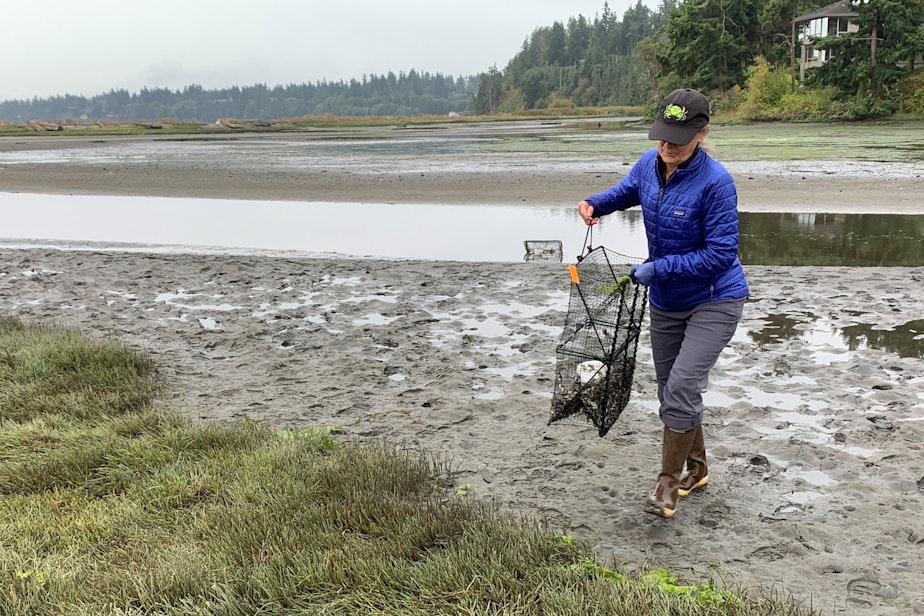
The crabs don’t spread by scuttling across the sea floor on their ten legs. Instead, their microscopic larvae—which look nothing like adult crabs and can be difficult even for experts to distinguish from larvae of native crabs—are carried around by ocean currents.
Grason said in many locations in Washington, persistent efforts to trap the crabs appear to have kept their numbers down. But, she said, the Lummi sea pond is a unique situation that may require a more aggressive response than just setting out traps.
“We definitely need to do everything that we can to eradicate them from this area,” Victor Johnson with the Lummi Natural Resources Department said.
“There's no silver bullet in the in these cases, and there's always tradeoffs to be made,” Grason said.
Sponsored
Lummi officials say all options are on the table, from increased trapping to dredging or temporarily draining the sea pond.
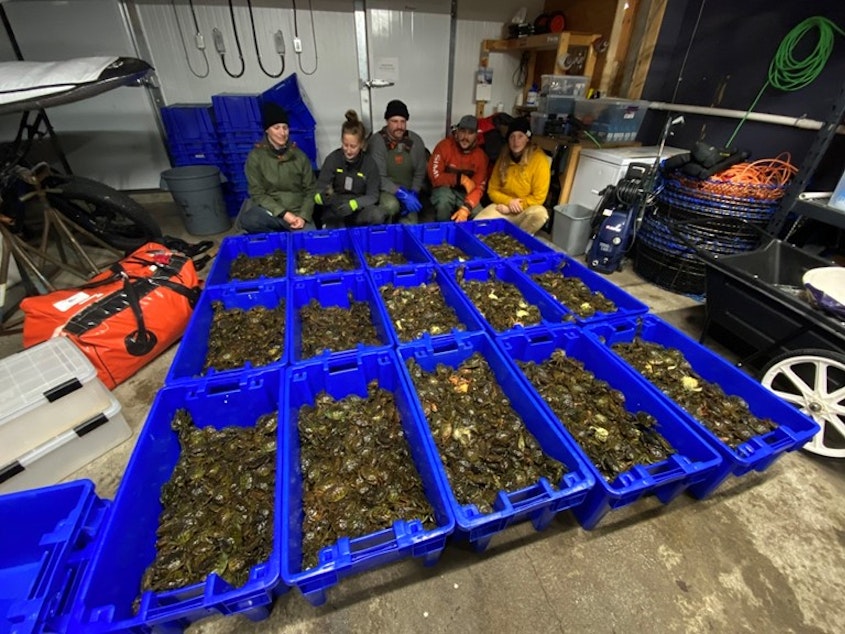
Lummi biologist Ben Starkhouse said the 1970s-era tide gates that let seawater in and out of the pond have fallen into disrepair, making it difficult to control water levels in the pond.
Starkhouse said the Lummi Nation is considering what is sometimes called "the nuclear option" in controlling invasive species: using a pesticide called rotenone to eradicate most animal life in the enclosed pond.
Conservationists have sometimes supported the use of rotenone, a neurotoxin produced by several plant species, in locations where harmful fishes or other invaders have taken hold.
“It’s really only used in oh-shit scenarios,” a Canadian toxicologist told Hakai magazine in 2019.
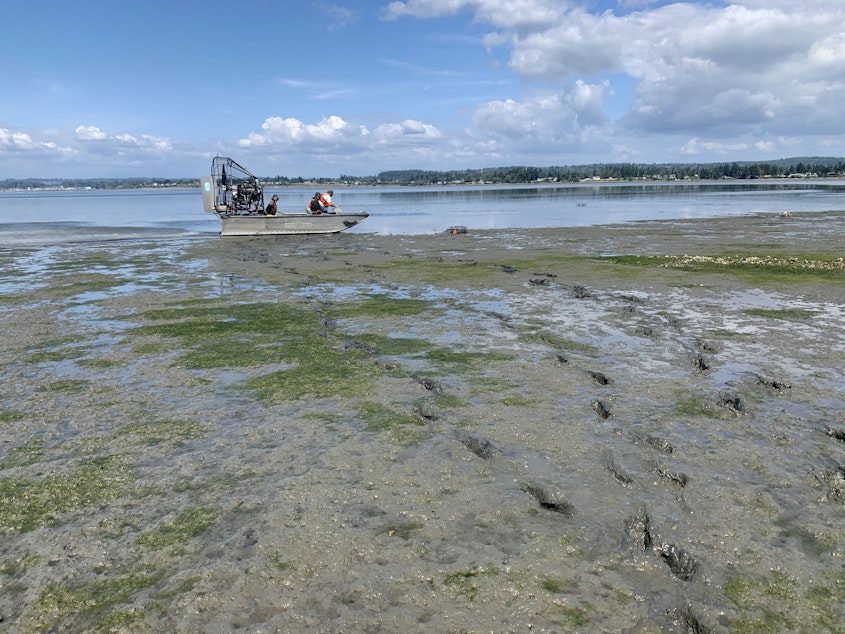
The Lummi sea pond likely houses the biggest population of crabs in Washington state, though other regions have seen worse invasions.
Organizations in New Hampshire and Oregon have put out green crab cookbooks to encourage seafood lovers to prey upon the invading invertebrates.
On Vancouver Island, the Coastal Restoration Society reports catching 50,000 European green crabs in Clayoquot Sound and the Sooke Basin in November alone, with ongoing trapping bringing in thousands more each day.
"Clayoqout Sound has encountered some staggering numbers," Saya Masso with the Tla-o-qui-aht First Nation in Tofino said in an email. "The situation is truly scary."
So many European green crabs have infested Maine waters over the years that officials no longer count the crabs they catch.
Instead, they weigh them.
From July through November, Lummi crews captured more than 70,000 of the invaders.
Workers have been freezing the unwelcome crabs to kill them, then dumping their carcasses in a landfill.
Lummi officials approached Tidal Vision, a Bellingham startup that turns crab shells into a biopolymer that can be used in water purification and textile manufacturing, in the hope that some good might come from the crustacean invasion.
But Buzzell says the company only accepts shells, not whole crab carcasses.
